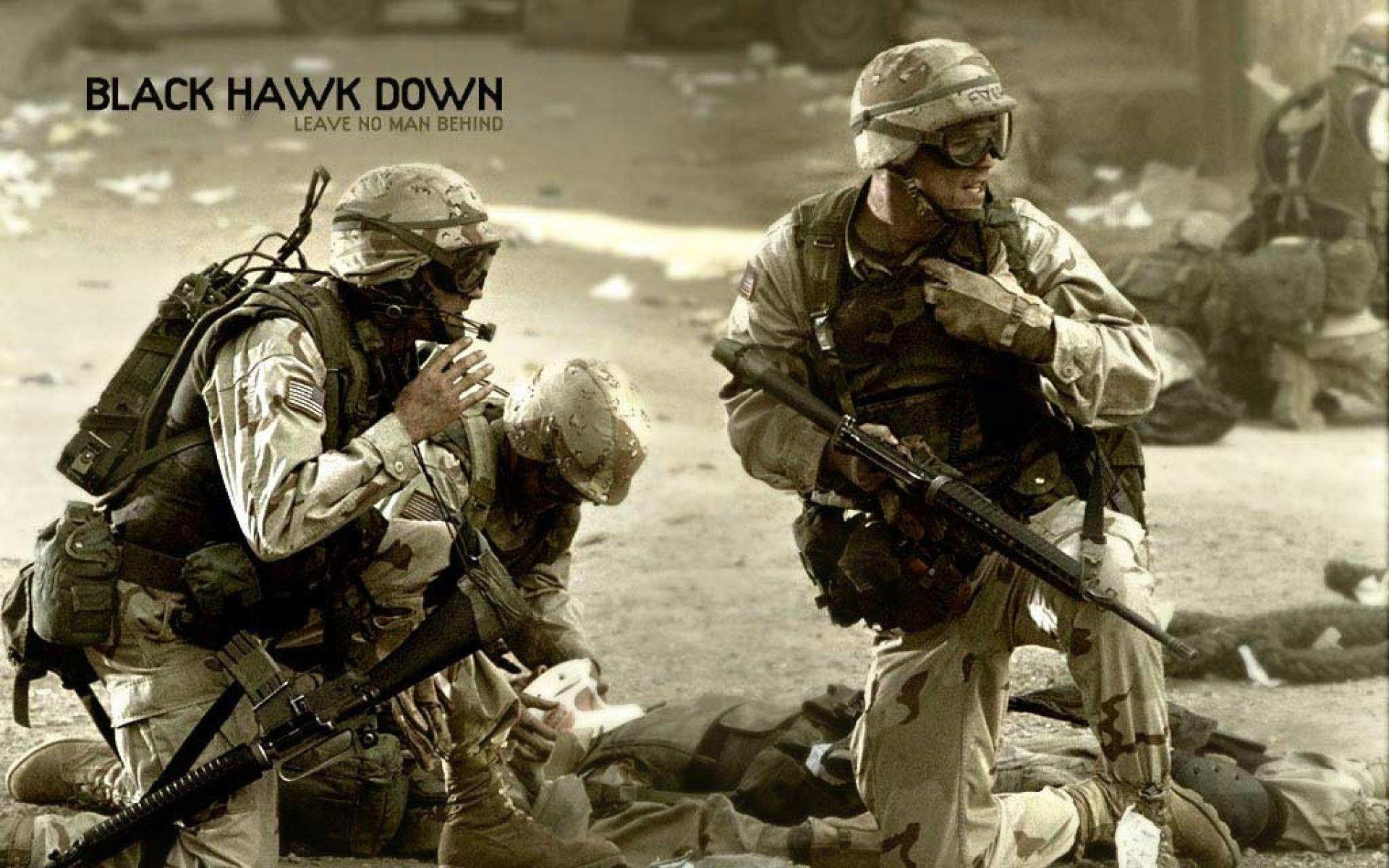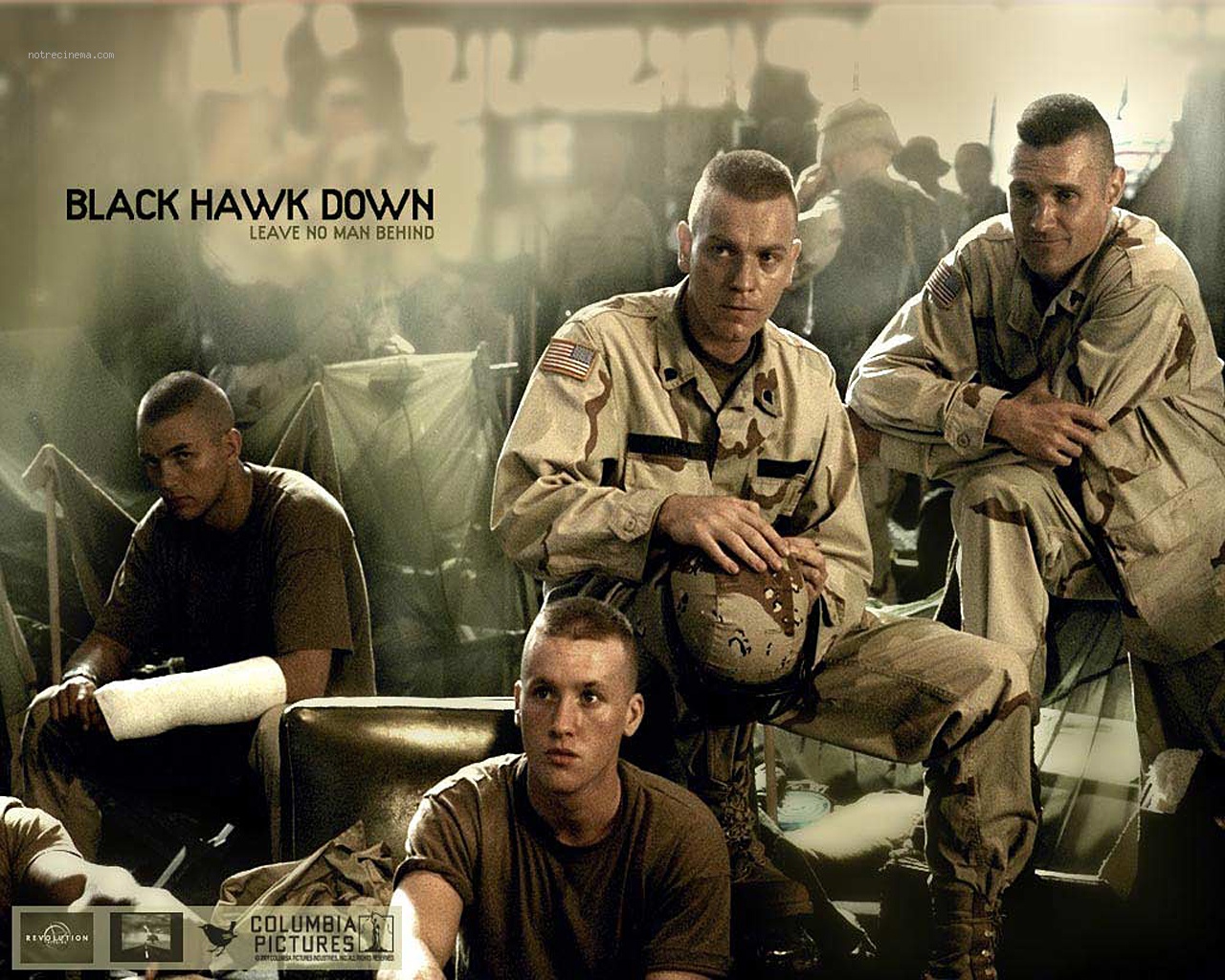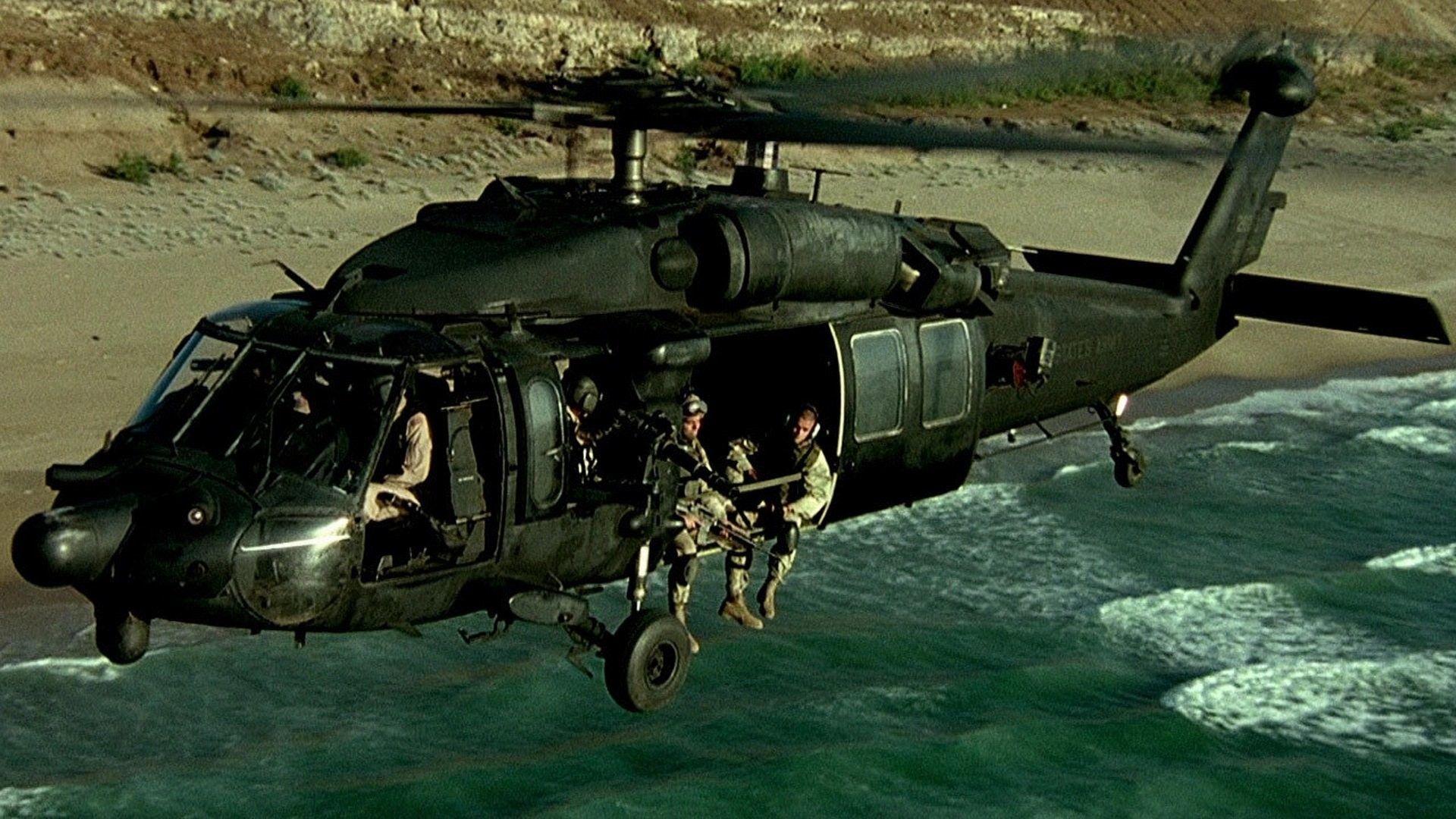The events surrounding Black Hawk Down hold a truly gripping place in recent military history, a story that still resonates with many people today. It's a tale of unexpected challenges, a moment when a routine task turned into something far more serious for a group of American soldiers. This particular event, which unfolded in a very real way, shows just how quickly things can change on the ground when you're in a difficult spot. For anyone curious about what happened during that time, or those who have only seen the film, there's a lot to consider about the courage and the sheer difficulty faced by those involved, you know, in that situation.
On October 3, 1993, a rather small group of U.S. Army Rangers and Delta Force troops found themselves dropped by helicopter into a particularly unwelcoming area in Mogadishu, Somalia. Their mission, as it was understood, was to carry out a specific task, but the situation quickly became something far different from what anyone had imagined. This day, a date etched into the memory of many, marks a turning point for these soldiers, and it’s a story that continues to be discussed and analyzed even now, as a matter of fact.
The name Black Hawk Down, too it's almost, has come to represent not just a specific military incident, but also the powerful film that brought this real-life struggle to a wider audience. This story, which explores the sheer grit and determination of soldiers caught in a firefight, is based on a 1999 non-fiction book. It gives us a window into a moment of intense combat and the very human cost of conflict, something that truly leaves an impression.
Table of Contents
- The Event: The Battle of Mogadishu
- The Film: "Black Hawk Down"
- Why It Still Matters
- Lessons Learned
- Frequently Asked Questions
The Event: The Battle of Mogadishu
A Mission Gone Wrong
On October 3, 1993, American special forces were sent into Somalia. The goal was to help stabilize the government and bring food and humanitarian aid to a population that was suffering from hunger. This mission involved using Black Hawk helicopters to lower troops into specific areas. It was, in a way, a task that seemed straightforward enough on paper, yet the reality of it proved to be something else entirely. The soldiers went in with a plan, but the situation on the ground quickly showed its unpredictable nature, which is that, you know, sometimes things just don't go as expected.
The particular task for the Rangers and an elite Delta Force team involved attempting to capture two individuals who were connected to a Somali warlord. This was not, apparently, a simple grab and go. The mission was meant to be quick, a rather routine operation that would achieve its specific aims and then be over. However, the unexpected happened, and it changed everything for those soldiers on that day. The situation, you see, took a very sharp turn, catching many off guard, and that, in itself, is a powerful part of the story.
What began as a mission with clear objectives soon turned into a deadly firefight. This event, which became widely recognized as the Battle of Mogadishu, saw U.S. soldiers become stranded in a truly dangerous situation. The environment was hostile, and the resistance was far more intense than anticipated. It was a moment of immense pressure and a fight for survival for everyone involved, so, in some respects, it became a test of their resolve and training, which is really something to think about.
The Forces Involved
The American forces on the ground were a combination of different units, each with their own specialized skills. There were U.S. Army Rangers, known for their quick movements and ability to operate in difficult conditions. Alongside them were Delta Force troops, who are a highly trained and very specialized group, often involved in critical, sensitive operations. These soldiers were dropped into the hostile territory by helicopter, which is that, a common way for such units to enter an area quickly, but it also carries its own set of risks.
These were soldiers who were prepared for a lot, but perhaps not for the kind of prolonged and intense urban combat they encountered. They were a small unit, facing a significant number of Somali forces who were determined to resist. The sheer difference in numbers, coupled with the unexpected turn of events, meant that every soldier's individual training and their ability to work as a team became absolutely critical for survival. It was, you could say, a moment where their collective strength was truly put to the test, and that, in a way, speaks volumes about them.
When the situation deteriorated, and soldiers found themselves in deep trouble, other Rangers and Delta Force operators rushed to help. This immediate response, a natural reaction for military units, showed the strong bonds and commitment these soldiers had to one another. They knew their comrades were in a bad spot, and they moved to rescue them, even as the danger around them grew. It's a powerful example of loyalty and bravery under extreme duress, something that, you know, really stands out.
The Helicopters Shot Down
A pivotal moment in the Battle of Mogadishu occurred when Somali forces managed to shoot down American Black Hawk helicopters. This was a truly significant event, as these helicopters were vital for transporting troops and providing support. The loss of these aircraft had a direct and immediate impact on the soldiers on the ground, making their situation far more precarious. It meant that their way in, and potentially their way out, was compromised, which, in fact, changed the entire dynamic of the battle.
The shooting down of these helicopters left U.S. soldiers stranded in the middle of a deadly firefight. Without the air support and quick extraction capabilities that the Black Hawks provided, the troops found themselves isolated and vulnerable. This particular development escalated the conflict considerably, turning what was already a difficult mission into a desperate struggle for survival against overwhelming odds. It's a detail that, very much, highlights the sudden and severe challenges they faced.
According to the information, three American Black Hawk helicopters were shot down on that day, October 3, 1993. This number underscores the intensity of the resistance encountered by the American forces. The loss of these aircraft was a stark reminder of the unpredictable and dangerous nature of the conflict. It’s a detail that, you know, stays with you when you consider the whole story of what unfolded during the Battle of Mogadishu, pretty much.
The Film: "Black Hawk Down"
Bringing History to the Screen
The events of October 3, 1993, found their way onto the big screen in the film "Black Hawk Down." This movie, based on the 1999 non-fiction book of the same name, brought the intense and harrowing experience of the Battle of Mogadishu to a global audience. It aims to show viewers what it was like for the U.S. soldiers who helicoptered into Somalia on what they thought was a routine mission, only to face an unexpected and brutal attack. The film, in a way, puts you right there with them, trying to convey the chaos and bravery.
The film captures the moment when troops found themselves forced into a battle they were not fully prepared to fight. It depicts the Rangers and the elite Delta Force team as they attempt to carry out their mission, only for their Black Hawk helicopters to be shot down, leading to a desperate struggle. The movie really tries to convey the sense of urgency and the continuous threat faced by the soldiers, offering a powerful visual account of the day's events. It's a cinematic experience that, you know, aims to be quite immersive.
Watching the trailers for the film gives a good idea of the intense action and the serious tone of the movie. It’s a story about resilience and teamwork under extreme pressure. The film has become a classic war movie for many, often praised for its depiction of combat and the human element within it. It’s a way for people to learn more about this particular historical event, and perhaps gain some understanding of the sacrifices made, which is actually a pretty important aspect of it.
Where to Watch
For those interested in watching "Black Hawk Down," there are several ways to do so right now. Currently, you are able to stream the film on Netflix. This makes it quite accessible for many viewers who have a subscription to that service. It’s a convenient option for anyone looking to experience the movie from the comfort of their home, so, in some respects, it’s pretty easy to find.
Beyond streaming, it is also possible to buy "Black Hawk Down" from various digital platforms. You can find it available for purchase on Microsoft Store, Amazon Video, Apple TV, and Fandango at Home. These options provide a way to own the film digitally, allowing you to watch it whenever you wish, without needing a streaming subscription. This gives viewers a bit more flexibility, which is good, you know, for different preferences.
Having these different platforms means that more people can access the film and learn about the events it portrays. Whether you prefer to stream or own a digital copy, the movie is readily available. It’s a story that continues to draw interest, and its availability across these services helps ensure that new audiences can discover it, which is, honestly, a positive thing for keeping the story alive.
New Perspectives
Even years after its initial release, "Black Hawk Down" continues to spark conversations and new insights. Recently, viewers on Netflix who watched a new documentary have expressed being quite moved by it. This documentary, apparently, offers a totally new way of looking at the classic war film, which is something that can really change how you see things. It suggests that there's always more to learn and different angles to consider, even with well-known stories, you know.
This new documentary has provided a fresh lens through which to view the events depicted in "Black Hawk Down." It has given people a chance to reconsider certain aspects or perhaps gain a deeper understanding of the context surrounding the battle. When a film, especially one based on real events, can still inspire new discussions and perspectives years later, it really speaks to its lasting power and importance. It’s a testament to the fact that history is often complex, and there are many layers to it, very much so.
The fact that viewers were left "appalled" by the new perspective indicates the documentary's impact. It shows that people are open to revisiting and re-evaluating historical narratives, even those they thought they knew well. This ongoing engagement with the story of "Black Hawk Down" through new media like documentaries keeps the conversation active and allows for a more complete understanding of the past. It’s a good thing, you know, to keep learning and thinking about these kinds of events.
Why It Still Matters
The events of "Black Hawk Down" and the film that tells its story continue to hold significance for many reasons. It serves as a stark reminder of the unpredictable nature of military operations and the real human cost involved when things go wrong. The bravery and resilience shown by the soldiers on that day in Mogadishu are qualities that resonate with people, highlighting the strength of the human spirit in moments of extreme pressure. It's a story that, honestly, sticks with you.
This event also brought to light many discussions about military strategy, preparedness, and the complexities of humanitarian interventions in unstable regions. It made people think about the challenges faced by forces operating in foreign lands and the potential for rapid escalation of conflict. The story of "Black Hawk Down" is, in a way, a case study for military academies and strategists, offering valuable lessons that continue to be studied and debated, even today, pretty much.
Furthermore, the film's popularity means that a wide audience has been exposed to a piece of modern history that might otherwise be overlooked. It fosters a connection between the public and the experiences of soldiers, allowing for a deeper appreciation of their service and the difficult situations they often face. It is, basically, a powerful tool for remembrance and for understanding a critical moment in recent history, something that is quite important, you know.
Lessons Learned
From the Battle of Mogadishu, and its portrayal in "Black Hawk Down," several important insights can be gathered. One clear lesson is the critical need for accurate intelligence and a thorough understanding of the local environment before engaging in operations. The unexpected strength of the Somali resistance showed that assumptions can be very dangerous in hostile territory. This experience, very much, highlighted the importance of being ready for anything, even when a mission seems routine, as a matter of fact.
Another key takeaway is the absolute necessity of robust support and rapid response capabilities for troops on the ground. When the Black Hawks were shot down, the immediate challenge was how to extract and reinforce the stranded soldiers. This event underscored the importance of having backup plans and the resources to quickly adapt when a situation takes a turn for the worse. It's a lesson that, you know, has likely influenced military planning ever since, in a way.
The sheer courage and determination of the U.S. Army Rangers and Delta Force operators, as they fought to survive and rescue their comrades, also offer a powerful lesson in human resilience and teamwork. Despite being outnumbered and in a desperate situation, they continued to fight and support each other. This aspect of the story is a testament to the training and the bonds formed within these units, showing that collective effort can make a difference even in the direst circumstances, which is, you know, truly inspiring.
Frequently Asked Questions
What was the real story behind Black Hawk Down?
The real story behind Black Hawk Down centers on the Battle of Mogadishu, which took place on October 3, 1993, in Somalia. A small unit of U.S. Army Rangers and Delta Force troops were dropped into hostile territory to capture individuals linked to a warlord. Somali forces shot down American Black Hawk helicopters, leading to a deadly firefight where U.S. soldiers became stranded. It was a prolonged and intense urban battle, where Rangers and Delta Force operators rushed to help their comrades, basically a fight for survival against significant opposition.
How many Black Hawks were shot down in Somalia?
On October 3, 1993, during the Battle of Mogadishu, Somali forces shot down three American Black Hawk helicopters. This incident was a pivotal moment in the battle, leaving U.S. soldiers stranded in a very dangerous firefight. The loss of these aircraft had a profound impact on the mission and the subsequent efforts to rescue the trapped troops, which, in fact, changed the entire situation for those involved.
Is Black Hawk Down based on a book?
Yes, the film "Black Hawk Down" is based on a 1999 non-fiction book of the same name. This book provides the detailed account of the events that unfolded during the Battle of Mogadishu. The movie takes its narrative from this written work, aiming to bring the real-life experiences of the U.S. soldiers involved to the big screen, allowing viewers to see a cinematic interpretation of the historical events, you know, from that particular source.
Understanding the events of Black Hawk Down, whether through the historical accounts or the powerful film, gives us a look at a moment of extreme human challenge and courage. It’s a story that continues to prompt reflection on military operations and the resilience of those who serve. If you haven't seen the film or want to revisit it, it's currently streaming on Netflix, and you can also find it for purchase on platforms like Microsoft Store, Amazon Video, Apple TV, and Fandango at Home. It’s a truly impactful story that, you know, stays with you long after you’ve experienced it.



